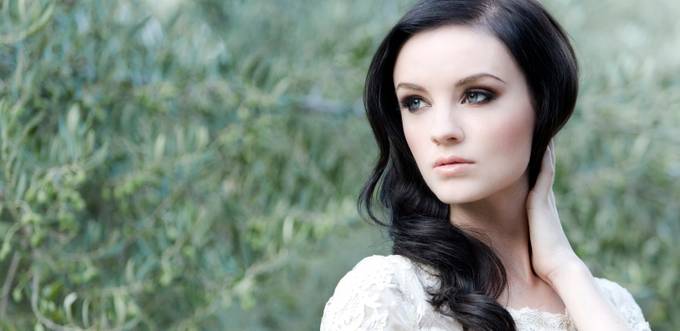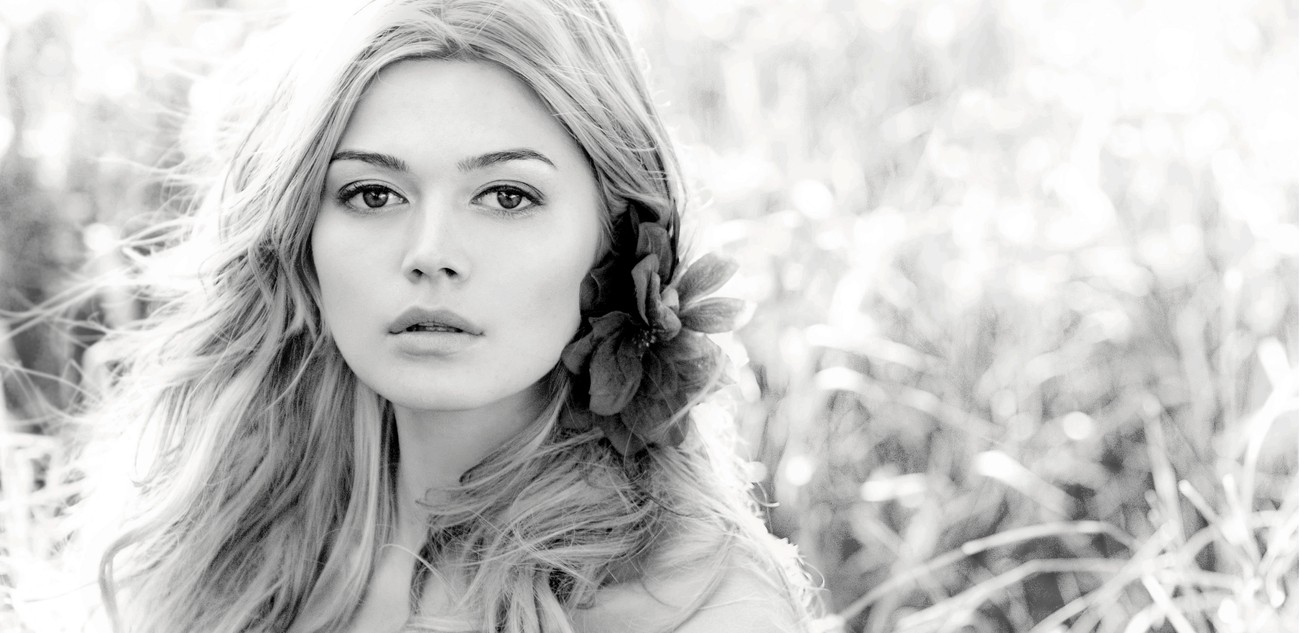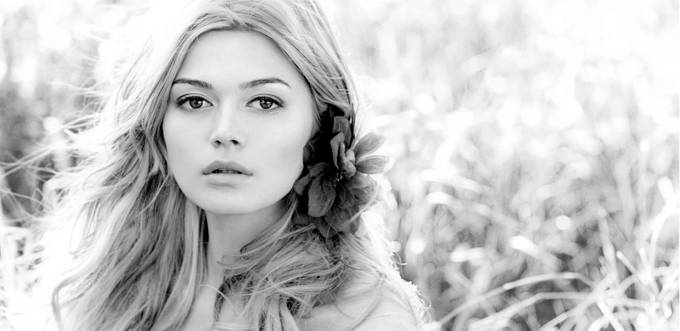One of the biggest trends in photography right now are portraits created with a “bokeh” effect. Bokeh is a Japanese word and in photography, it’s used to describe a beautiful, ethereal and blurred effect, most commonly in the background of a portrait. This effect is often used to add a dreamy quality to photos but can also be an excellent tool for dealing with ugly backgrounds like parked cars or cluttered scenes.

Go Wide Open & Get Close To Captrue Great Bokeh
The first step to achieve a bokeh effect is to choose a lens that goes wide open. To create the shallow depth-of-field that makes bokeh work, you need to shoot with a faster lens that allows for apertures like f/1.8, f/2, f/2.8 and f/4. The wider the aperture, the blurrier the bokeh will be.
When working with wide f-stops, don’t forget to place your camera’s autofocus point on the eyes of your subject to make sure that while your background goes blurry, your subject’s eyes are in tack-sharp focus. Also keep in mind that with a limited depth-of-field, you are working with a limited focal plane. For example, with an f-stop like f/1.8, the area of focus is only an inch or two. With such a small area, the more your subject turns away from the camera, the less the eye that isn’t in the foreground will be in focus. Just something to keep in mind as you shoot.
The second important step to creating bokeh portraits is your distance from the camera to your subject and the distance between the subject and the background. You will see the best background effect if you create some distance between your subject and what is behind them.
The blur effect will increase, the further you move your subject away from the background. It also helps a lot if you move close to your subject and shoot from just a few feet away.

Embrace Natural Backgrounds
One of the most beautiful techniques for bokeh portraits is to use an outdoor, natural-looking background. A garden, park, or simply your subject’s backyard will usually provide lots of vegetation to work with. Foliage makes an excellent backdrop for bokeh portraits because the leaves provide a lot of surfaces for light to reflect and create specular highlights. These highlights are the pretty circles and shapes that make this technique so beautiful.
In the example above, an olive tree grove made an excellent background to throw out of focus. The shape of the olive leaves created a unique looking bokeh effect and the subject’s striking green eyes tied everything together for a soft and romantic portrait.

Use Both Foreground & Background
Most often you see bokeh used in the background of a portrait, but it can also be used in the foreground. This works well with natural backdrops as you can place a few leaves, flowers, or a branch in the foreground and shoot through them. Bokeh created with small points of light is also an area where you can utilize this technique. In a studio environment, you can experiment with hanging miniature lights both in front of and behind your subject to create a dramatic look.
In the example above, fairy lights were strung in front of and behind the subject. The larger circles of light that you see on the left of the frame were in front of the subject while the smaller circles on the right are lights that were hanging behind the subject.
I hope these techniques inspire you to tackle some bokeh portraits. The more you practice, the easier it will be to experiment and figure out your own favorite approach to bokeh.
--
Born and raised on the West Coast, Laura Tillinghast began making art at a young age. She explored many mediums until finally discovering photography when she was 17 years old. From that point on, she knew she had found the tool she was looking for to bring her imagination to life. Shooting primarily advertising and editorial content, you never know what you will find in front of Laura's lens. Whether it is a gorgeous model, a rock band, or a bowl of oatmeal, she shoots with the same goal in mind; make it beautiful. See more of Laura’s work at her website: lauratillinghast.com



